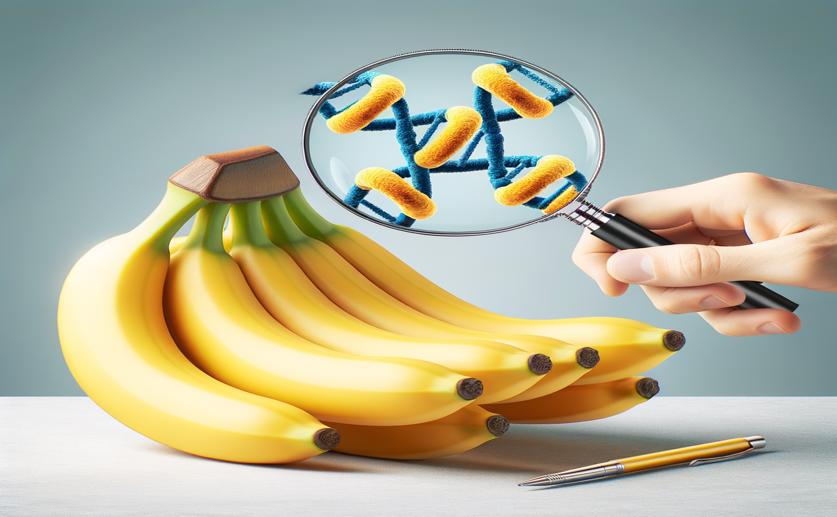
New Virus Sequences Found in Bananas Reveal Key Retrovirus Gene in Their DNA
Greg Howard
3rd August, 2024

Image Source: Natural Science News, 2024
Key Findings
- The study identified two new banana endogenous virus sequences (BEVs), named GZ5 and GZ13, in different banana varieties
- BEV GZ5 contains a complete gene for reverse transcriptase (RT) and ribonuclease H (RNase H), suggesting it might retain some functional elements from its viral ancestors
- BEV GZ5 is integrated into the BB genome of bananas, while BEV GZ13 is specific to the Dajiao variety
References
Main Study
1) Identification of new banana endogenous virus sequences highlights the hallmark gene encoded by retroviruses integrated in banana genomes
Published 2nd August, 2024
https://doi.org/10.1186/s42483-024-00256-7
Related Studies
2) Three infectious viral species lying in wait in the banana genome.
3) Badnaviruses and banana genomes: a long association sheds light on Musa phylogeny and origin.
4) Chromosome-scale assemblies of plant genomes using nanopore long reads and optical maps.
5) Telomere-to-telomere gapless chromosomes of banana using nanopore sequencing.



 31st July, 2024 | Jim Crocker
31st July, 2024 | Jim Crocker